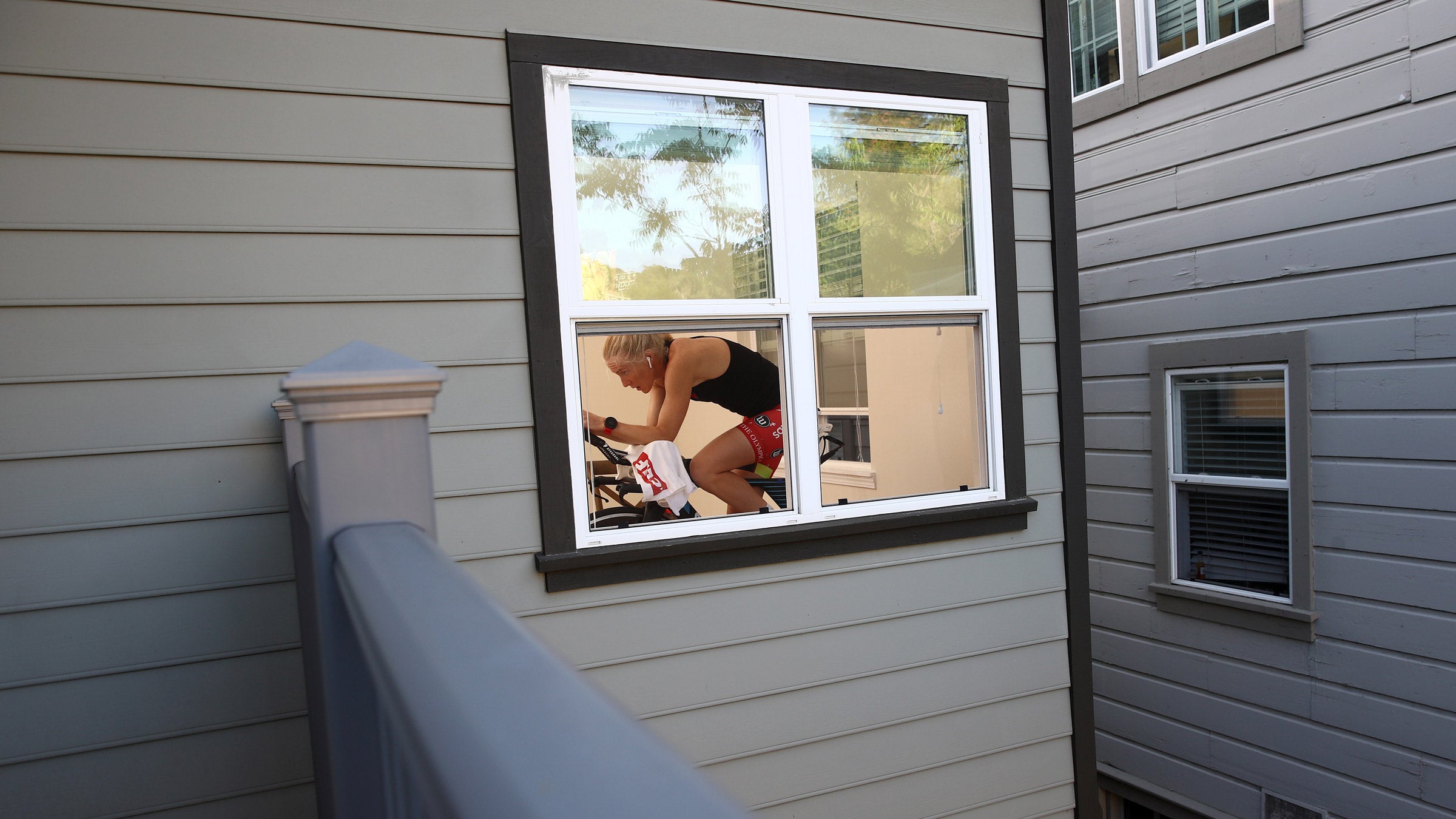Dear Coach: Should I Ride in the Aero Position While Riding Indoors?

Should you ride in the aero position indoors? Here's your guide to positioning yourself on the indoor trainer. (Photo: Ezra Shaw/Getty Images)
While spring is on the horizon, depending on where you live, you might still be riding indoors a fair amount. As you build your base for spring training, you might be asking yourself about how long you should be spending in the aero position and how important it is to do that – particularly during indoor training rides. It’s a very valid question!
RELATED: Critique My Fit: Shoulder Issues and More
How is the TT bike different from other bikes?
Road, mountain, and gravel bike positions are characteristically more comfortable, confidence-inspiring, and nimble than the more forward, hinged position of the TT bike. This is largely due to the difference in body mass representation over the bike’s contact points and the unique differences of the time trial position; the hands in the extensions where brakes are not as easily accessed; the “steepness” in both seat tube and head tube angles, and, of course, the shift in how the contact points support you in a more forward position. Because of the differences in geometry and position, the TT position can produce more acute hip and knee angles in flexion and, therefore, challenge your body’s physiology in a different way.
For triathletes, particularly long-course athletes, re-familiarizing your training in this position is crucial. But how much focus should you put into maintaining that forward, aero position in your training week?
RELATED: Triathlete’s Guide to Indoor Training
Cost/benefit of aero position
Whether you are transitioning from a more upright riding position back to your TT position or you are riding your TT bike exclusively and trying to determine the cost/benefit of maintaining aero throughout a training ride, you should assess the purpose of that particular training session to define how much focus you should place on riding in the aero position.
For instance, if your bike session consists of aerobic endurance or tempo intervals (maintaining effort that is closely aligned with your goal wattage or RPE, rate of perceived exertion) for racing and has a focal point of race “specificity” for your training that day, try to maintain your aero position for as much of that session as possible.
If you can comfortably maintain up to your lactate threshold in the aero extensions, it’s a good sign! However, as soon as the higher intensity intervals encroach on your performance goals during that training session – whether that’s by watts, speed, or heart-rate – you’re training in a position that might come at a greater cost to the physiological adaptation you’re seeking out of that particular session. If your training session includes sprints, sustained VO2 max, or threshold efforts, foregoing the aero position will make the target more attainable. The goal should be to promote the highest amount of muscular potential, aerobic capacity, and repetition of movement for optimal power output.
Hip angles and why they’re important
Sitting upright will “open” your hip and knee angles, particularly in the peak power phase of your pedal stroke, which will yield better overall repeatability of power than if you were forward in the extensions in a more “closed” hip position. This difference in angles can also reduce your ability to breathe as effectively through your chest, back, and belly, and therefore, compromise your ability to maintain your best effort specific to the desired physiological system you’re developing.
Conclusion: Rules of thumb for your training rides
Think of your “aero-focused” training efforts as functional, meaning the goal of the session is race-specific and building your engine in a range of efforts similar to the demands you’ll have on race day. Think of high-intensity efforts as physiological, implying that you are simply trying to get the most out of your session and want to get in as much oxygen to supply your brain and muscles for optimal performance.
Presenting the best environment for your desired training adaptation will yield the most benefit out of each session and will improve the quality of your bike sessions. If you are simply not comfortable in the aero position this is an important fix to make and you should seek out a bike fitter who commonly works with triathletes and understands the unique demands of spending hours in the extensions. You won’t regret it!
RELATED: Critique My Fit: Saddle Sores And More
Pat Casey is a USAT Level 2 certified coach, certified strength and conditioning specialist, bike fitter, and co-founder of Peak State Fit.